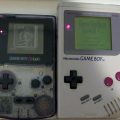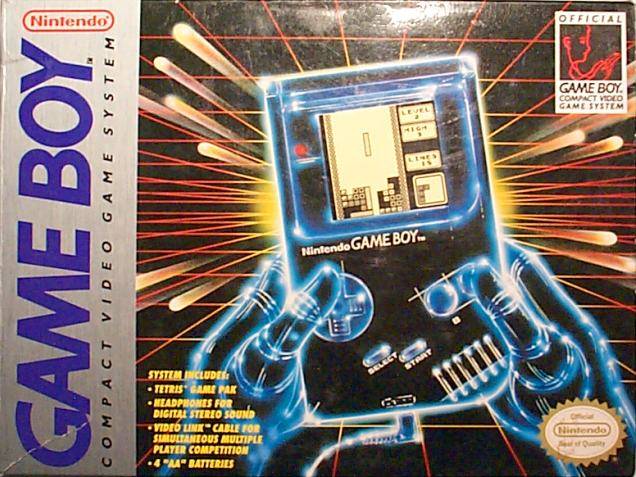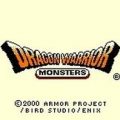Geek Babble– Getting My Pricey Handheld Fix

On December 10th Analogue announced they were finally starting to ship pre-orders of the Pocket. I was one of the people who were able to pre-order a handheld in August of 2020. It was quite an experience as orders sold out in less than five minutes– a dreadful precursor to the next-generation console launch that would take place in November. I managed to order both the Pocket and the dock. Not only did Analogue require full payment upfront, but my order was delayed twice. When my handheld and dock finally shipped on December 14th and arrived on December 16th I was elated.
Before I could enjoy playing on my Pocket, it required a firmware update. I was out of micro SD cards and had to wait an additional two days. A friend wisely pointed out on our Discord server that I waited for nearly a year and a half. What’s another few days? Once my micro SD card arrived and I installed the update, I was ready to go.

Before I get further into my impressions, I realized no one on this blog has really talked about Analogue or the Pocket.
Analogue, Inc. was founded in 2011. They are a privately held small American company that develops video game hardware and accessories. As they claim on their own website, “We make products to celebrate and explore the history of video games with the respect it deserves.” In other words, they develop retro consoles, handhelds, and numerous accessories. What separates Analogue from companies like Hyperkin is the fact that their hardware does not use software emulation to play the cartridges their devices support. Normally retro consoles such as Hyperkin’s Retron 5 rips the ROM from a cart and plays it via software emulation that mimics the hardware. In Analogue’s case they use FPGA chips to emulate, or rather re-create the original hardware. This makes the experience nearly identical to playing on actual hardware. At the end of the day it comes down to what the gamer wants in terms of performance and price.
The Pocket is a handheld that plays Game Boy, Game Boy Color, and Game Boy Advance cartridges right out of the box. With adapters it can also play Game Gear, Atari Lynx, and Neo Geo Pocket cartridges. It allows for four people to connect their Pockets and play multiplayer games, just like having a link cable for the Game Boy. In fact, a Pocket can be linked to most models of the Game Boy. The screen itself is what sets it apart from most other third party handhelds. The LCD screen sports a 1600×1440 resolution at 615 PPI– basically a nice large resolution with great pixel density packed into a 3.5 inch screen. The system also has an optional dock that allows it to be played on an HDTV or display. A number of wireless controllers can be easily paired with the handheld.
So how does owning a Pocket stack up against the slick marketing campaign?

Pretty good actually. When I unboxed my Pocket the first thing I noticed was the quality of the build. The matte finish felt great to the touch and the unit is solidly built with heavy plastic. The dock is sturdy with a metal finish. At $199 for the Pocket and another $100 for the dock, I paid a fair bit, so I’m happy to have a premium quality product. Oddly enough, the Pocket only ships with a USB C to C cable and no wall charger. If you don’t have this specific type of charger, you’ll easily find yourself dropping more cash to acquire one or a USB-C to USB-A adapter. Fortunately, the dock includes the charger along with another USB-C to C cable and an HDMI cable.
As I said earlier, the firmware has to be updated right out of the box as a few features weren’t included on the Pocket or the dock. The Pocket updates via micro SD and the dock uses a USB stick. Downloading and installing the new firmware is a breeze and the process takes less than 10 minutes total. Once that’s done you’re ready to start playing games.
The first game I tried was DemiKids Dark Version.* The LCD screen looked amazing. The colors were bold and the pixel art was so very crisp. It’s easily one of the best screens I’ve seen on a handheld when it comes to Game Boy. I cycled through The Legend of Zelda: Oracle of Ages and it’s counter part, Oracle of Seasons. Both of these games looked fantastic. Again, the colors and pixel art just popped and the crispness couldn’t be matched. For an original Game Boy test I played Final Fantasy Legend III. While the screen was bright, I was not a fan of the original pea soup monochrome colors. It took me a little while to find the right setting, but I was able to change the display mode from the original colors to Analogue’s own GB mode which is a monochrome gray with sharp pixels. Color palettes can be added for a splash of extra color. I opted for a blue palette that leaves backgrounds a pleasing shade of blue-gray while characters are shades red and solid black. The same color scheme didn’t look so great in Donkey Kong Land III, but changing the palette is always an option.

After playing on larger systems with a form factor such as the DS, PSP, 3DS, Vita, and Switch, I thought I’d have a harder time with the Pocket. I was wrong. The form still feels great and my Switch OLED now feels almost unreasonable heavy. There’s just something so very enjoyable about the original GB form, even as Analogue’s offering is a bit thinner.
The Pocket’s matte finish feels great, but it picks up oils from the skin. The face buttons feel good and they’re laid out in the standard diamond pattern. My only gripe is that some games use a different configuration of the face buttons which can be slightly annoying. Other reviewers have complained about having the shoulder buttons on the back of the Pocket, but it hasn’t been too much of a problem for me. I suspect I own a lot of games where you’re not required to press those buttons much, thankfully. If I had to hold the shoulder buttons for long periods of time, I’d probably have an issue too. I do wish that cartridges locked in place as they are way too easy to remove. I can’t see myself bumping them free, but the possibility is there.
The dock functions much like the Switch’s dock. Switching from the Pocket to the big screen takes a second or two longer than the Switch. That’s provided the Pocket is lined up correctly with the USB-C connector. Shamefully, I’ve missed this mark a few times. Game Boy games blown up on a large TV (40+ inches) don’t look great, but the option to play them in 1080p helps quite a bit. Smaller displays (anything 24-inches or below) look much better. Any wireless Bluetooth controller will pair with the docked Pocket, including PS4 and PS5 controllers. (I actually discovered this via Spawn Wave’s own review on YouTube.) I connected my 8BitDo Sn30 Pro without issue. It was as easy as pressing the sync button on the back of the dock and turning the controller on. I wish I had this easy of a time using the Sn30 Pro with my Switch. Analogue’s support FAQ states the dock works with the 8BitDo Pro 2, M30, and Arcade Stick, but again my Sn30 Pro worked just fine. It also works with PlayStation’s DualShock 4, DualSense, the Xbox One controller, and the Switch’s Pro controller. I imagine support will only improve with future updates.

I can’t speak to any of the accessories beyond the dock, as the only accessory I really wanted was the Neo Geo Pocket adapter which has never been available to order. I was tempted by the case, but shipping isn’t until 2023 because I missed the 2022 pre-order group. The same goes for screen protectors. This is insane for a device meant to be taken on the go. Ultimately, I may just search for a case meant for the Game Boy Color and use one of my spare Switch screen protectors that has been measured and cut to size. I understand that Analogue is a small company, but I just can’t get over how something as simple as screen protectors have a waiting list.
All and all, the Pocket is one of the best ways to play original Game Boy through Game Boy Advance games. I had imagined going back to GBA games via my DS Lite, and playing anything older on my GBA. To record game footage or stream, my Retron 5 was a viable option, provided the game was compatible. The Pocket fixes all of my really specific needs all at once. I can leave my GBA and DS Lite on the shelf, and hardware emulation reduces my changes of running into incompatible games while being able to stream/record footage.
If you want one of the best retro gaming experiences out there, I do recommend the Pocket. Unfortunately, if you pre-order the Pocket now it won’t ship until sometime in 2023 as supply shortages continue. Also at $220 this handheld is not cheap. Add another $100 for the dock and you’re approaching console prices. If good enough and on the cheaper side is your philosophy, there are endless alternatives out there.

As for me, I’m satisfied with my purchase.
I’m also that person who picked up a Switch OLED at launch to replace her 2017 model. Was it worth it? Considering the system isn’t as buggy and actually has a battery life beyond two hours, yes. I do love the bigger screen, sturdier rails, wider kickstand, and the overall premium feel.
I’ve definitely blown my gaming budget for the year. Fortunately, supply shortages and wanting slimmer redesigns of the PS5 and Xbox Series X will keep me from blowing my gaming budget in 2022.
*I also recorded a video of DemiKids from the Pocket just for this quick review.





